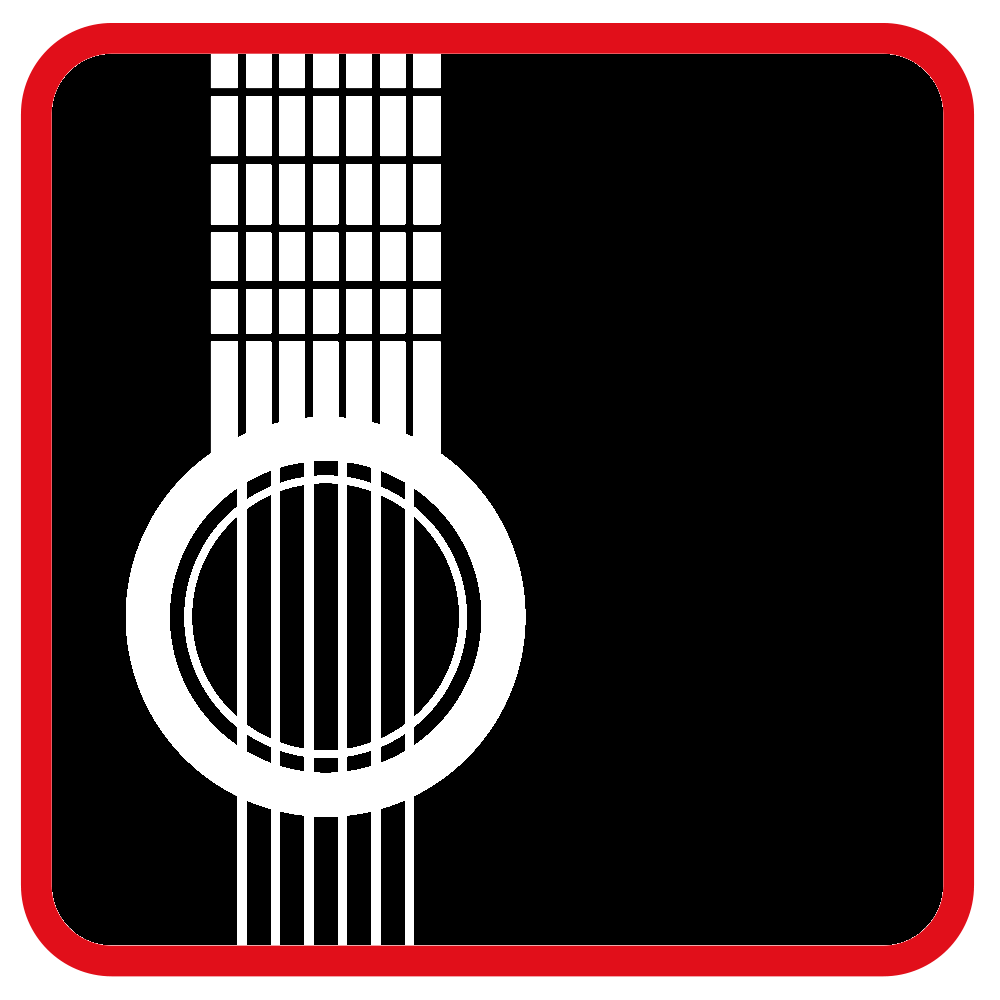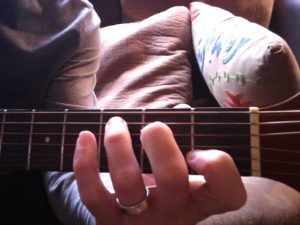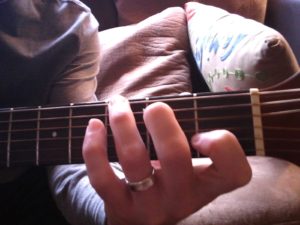
Guitar Mastery: Hard and Soft Skills
Most tasks can be categorized into either a hard skill or soft skill. An example of a hard skill includes being able to precisely play a G chord to C chord perfectly every time or being able to play the G major scale perfectly at a specific speed. A soft skill might include being able to use the G major scale while soloing or interpreting a passage of music and imbuing it with a certain emotion. The trick, Dan Coyle give as Tip #7 is to figure out if you are practicing a hard skill or soft skill.
Hard skills are about repeatable precision. On guitar, this can include: playing the correct notes for a piece of written music, playing a chord change consistently, knowing and playing your scales at a specific speed, being able to perform the tremolo technique, executing the rhythm of a written piece, playing arpeggios, rasguedo technique, recognizing the changes, and so on. Basically, anything that can be considered a technique or technical challenge – the physicality of playing the instrument and applying specific knowledge to execute consistently every time.
If hard skills are the physical aspects of playing, soft skills would be knowing how and when to apply the appropriate hard skills. Soft skills are about instantly recognizing patterns as they unfold and making smart, timely choices. In order to execute on your recognition, you must have the solid foundation of technique (aka hard skills). Some soft skills on guitar might include: sight reading, improvising, comping, interpreting written music, playing to an audience and so on. Soft skills are about being agile and interactive – you are constantly reading, recognizing, and reacting.
Tip #7 tells us to determine if we are practicing a hard or soft skill because there is a different approach to practicing each type. You must first be able to categorize the skills and notice the subtle difference between the two types in order to pick the appropriate mindset for practice and development.
The following three tips take this idea further, explaining the method of deep practice that work best to develop each type of skill.
Tip #8: To Build Hard Skills, Work Like a Careful Carpenter
Be careful, slow, and keenly attuned to errors. Make one simple move at a time, repeating and perfecting it before moving on. Pay attention to errors and fix them. This is where having a good teacher comes in. Often times as a novice, it is difficult to determine the errors and, furthermore, it is not always obvious how to fix them.
Coyle gives the example of the Suzuki Method for learning an instrument. He writes, “…they (students) learn to hold the bow without the violin, and go through the bowing motion. Each fundamental is worked on over and over until mastered. Precision is especially important early on because the brain is good at building connections but not so good at unbuilding them.” Read that last part again. If you had piano lessons as a child, maybe you went through the motions of learning scales and simple pieces before you could tackle pieces you actually wanted to play. You might have even quit before you got to the point of playing music you actually wanted to play. Many music teachers focus on the fundamentals and force kids to drill over and over because they know that learning a foundational skill the right way is easier than having to go back later to fix it. Though it might be boring to the student, these fundamentals are paramount to playing real music at a more advanced level.
Remember Daniel-son from the Karate Kid? Mr. Miyagi had him wax on and wax off and paint on and paint off every day for a considerable time. Now, remember why Daniel had to repeat these seemingly inconsequential motions? Mr. Miyagi was drilling the fundamental movements into Daniel’s motions and, therefore, teaching Daniel the basic movements to start practicing karate. If Daniel had neglected to follow Mr. Miyagi’s instructions, then when Mr. Miyagi went to test him by throwing a punch and kick, Daniel would have been knocked to the floor unable to block properly.
So next time you feel bored by drills or going over some basic techniques, remember that you might get punched in the face (proverbial speaking) when challenged with playing a piece of music if you did not prepare properly.
Important side note: a good teacher will make learning these fundamentals as fun and relevant as possible by guiding students through appropriate level pieces and techniques. Practicing the fundamentals does not have to be boring!
Tip #9: To Build Soft Skills, Play Like a Skateboarder
I used to skateboard from the time I was a kid until moving to college. It was a fun, addicting sport and I couldn’t wait to get home everyday to go out and skate. Each day, my friends and I would go out to find new spots or try new tricks on familiar spots – there was always a challenge or some new trick we were trying. Though there are definitely the hard skills of knowing how to ollie, kick flip etc., the challenge was always how to use those skills in new environments (over stairs, on new ledges, etc.) We would have to familiarize ourselves with new spots or new transitions and apply what we knew to new environments. As we rolled along on our skateboards, we would have to survey our passing environment and recognize obstacles and size them up in order to apply our tricks to the ever-changing landscape – constantly adjusting and reacting to the new terrain.
Soft skills are built by playing and exploring inside challenging, ever-changing environments. They are the result of super-fast brain software recognizing patterns and responding in just the right way. Some examples of soft skills on the guitar include: jamming with other musicians, live performances, improvising, and comping. These are places where you encounter different obstacles and respond to them over and over. To develop soft skills, you should explore, seek challenges and play. The goal with soft skills is to repeat them as often as possible in new ways and to get clear feedback. Do not focus on mistakes or errors – it is more important to explore and play. After each session ask yourself, “What worked? What didn’t? Why?”
For a more adult-oriented post about creating an environment to play with the soft skills, check out my post here. (Adult content warning)
Tip #10: Honor the Hard Skills
“Most talents are a combination of soft and hard skills. Prioritize the hard skills because in the long run they are more important to your talent.”
It is well known that many experts at the top of their fields stay sharp by drilling the fundamentals regularly. Case in point, Yo Yo Ma starts each session by playing single notes, working on tone and playing scales. You must keep the hard skills sharp in order to remain agile and apply them as needed. Being able to move your fingers fluidly and accurately allows you to play anything else you work on and apply the soft skills of musical interpretation, improvisation and creating music.
Most of us want to jump straight in to playing certain songs or learning that solo or playing like “that guy” (insert any guitar hero here). We often do not realize how many hours of dedicated work on fundamentals and basic technique goes into a performance. Hard skills will give you the technical prowess on the guitar but the soft skills are where most of the fun happens. The trick is to recognize there are 2 different modes of practicing and you must be clear as to which mode to apply when practicing. Prioritize the hard skills because it will enable you to perform the soft skills with clarity and ease. Use the hard skills to facilitate the soft skills. Relish the chances to explore and create. Jam with as many friends as possible, listen to many different musics, try to figure out that hot lick from your favorite solo and how to throw that in to your arsenal, figure out how to sound ‘oustide’ on your next solo break, throw out some funky chords, move those fingers around to find new chords and extensions, and remember to have fun while discovering new sounds.



